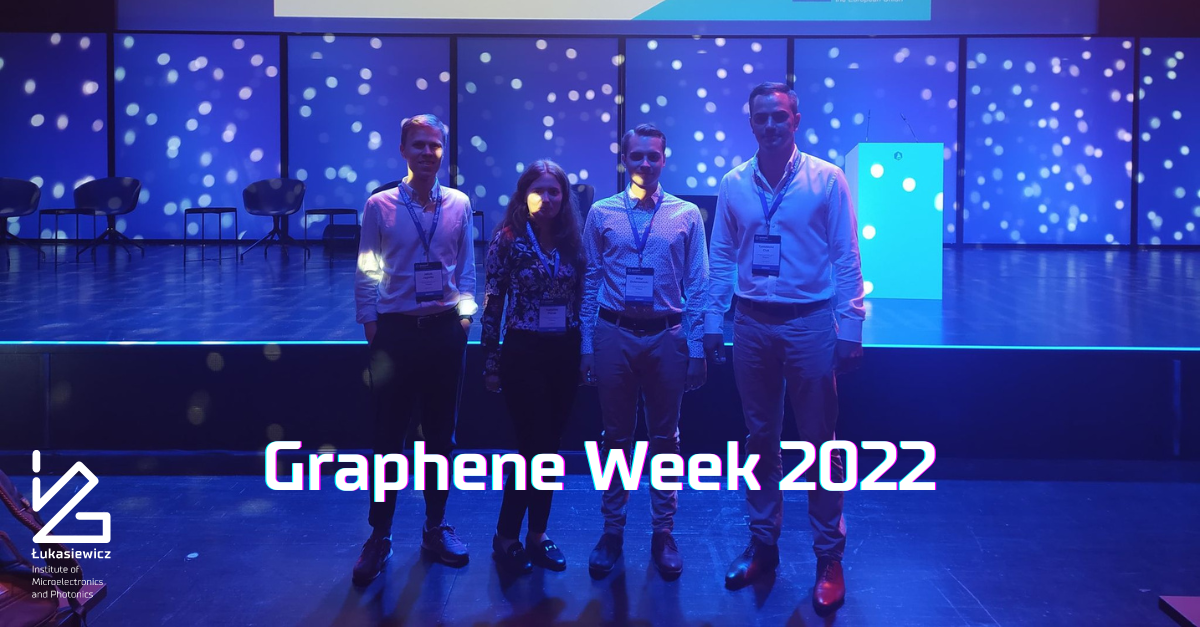Our four Graphene Musketeers are currently visiting our neighboring country as Graphene Week started in Munich, Germany yesterday! Researchers from Łukasiewicz – IMiF are about to present their latest research results on epitaxial and transferred graphene, financed under the NCN and NCBiR projects.
In a nutshell, as Artur Dobrowolski, M.Sc. told us before the departure: “The topic of the conference is a method of determining the numbers of graphene layers. The integration of our method with standard characterization tools will allow us to deepen the knowledge of materials and what’s more, find new, more accurate forms of standardization and characterization of samples!”
The leader of the Graphene and Composites Research Group – Tymoteusz Ciuk, Ph.D. is going to tell the conference participants about “Neutron-irradiation-resistant high-temperature graphene Hall effect sensor for advanced magnetic diagnostics”. In essence – the sensor is greatly resistant to fast-neutron irradiation and possesses a self-healing capability. For these reasons it constitutes a promising sensory platform for magnetic diagnostics in modern confinement fusion reactors – the tokamaks.
Karolina Piętak, M.Sc. will present a method for improving the resolution of imaging graphene topography on SiC by Raman spectroscopy, using atomic-layer-deposited aluminum oxide on a graphene surface. It’s worth underlining that this solution not only details the material characterization but also effectively protects the graphene!
“We are reporting on the first experimental study regarding the impact of neutron radiation on quasi-free-standing (QFS) graphene. For this purpose, we have fabricated hydrogen-intercalated QFS graphene on semi-insulating 4H-SiC, and passivated it with an Al2O3 layer.
We have conducted structural and electrical characterization of the structure employing state-of-the-art micro-Raman spectroscopy and Hall effect measurements” – said Jakub Jagiełło, M.Sc., the third participant of the conference representing our Institute.


